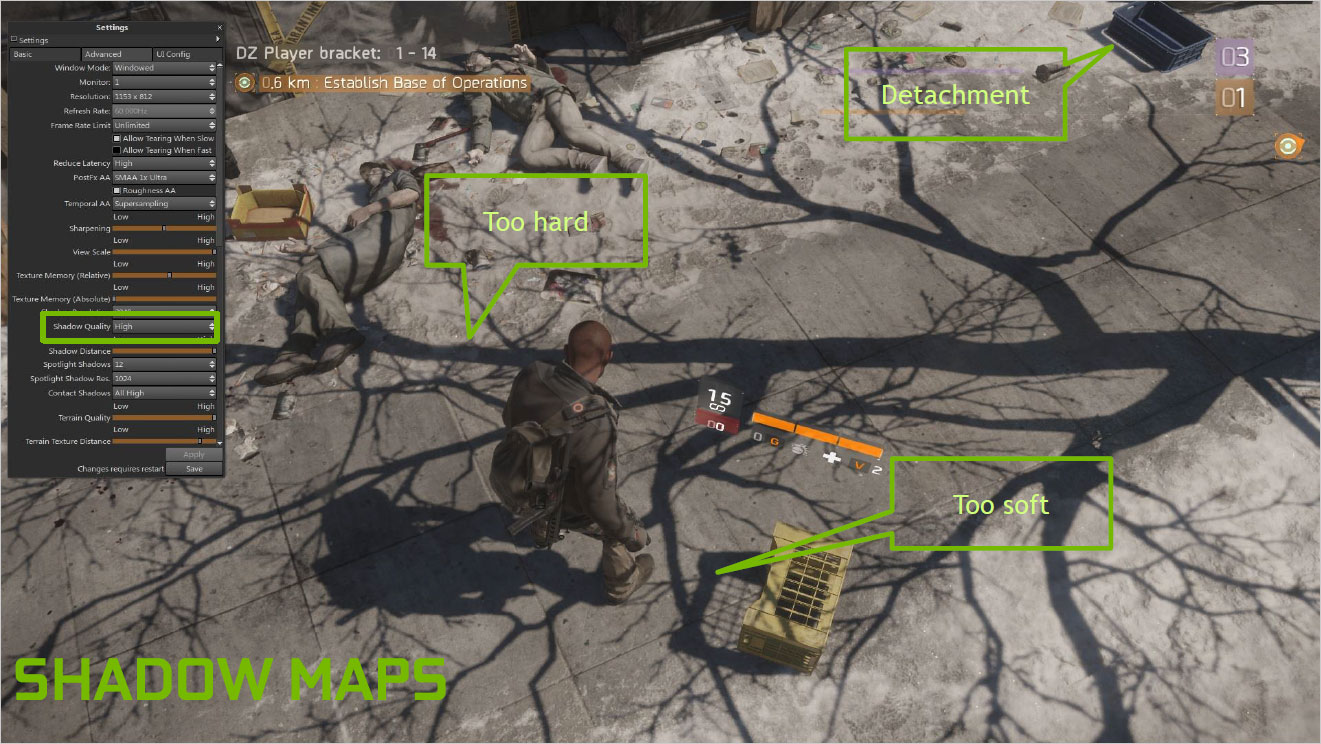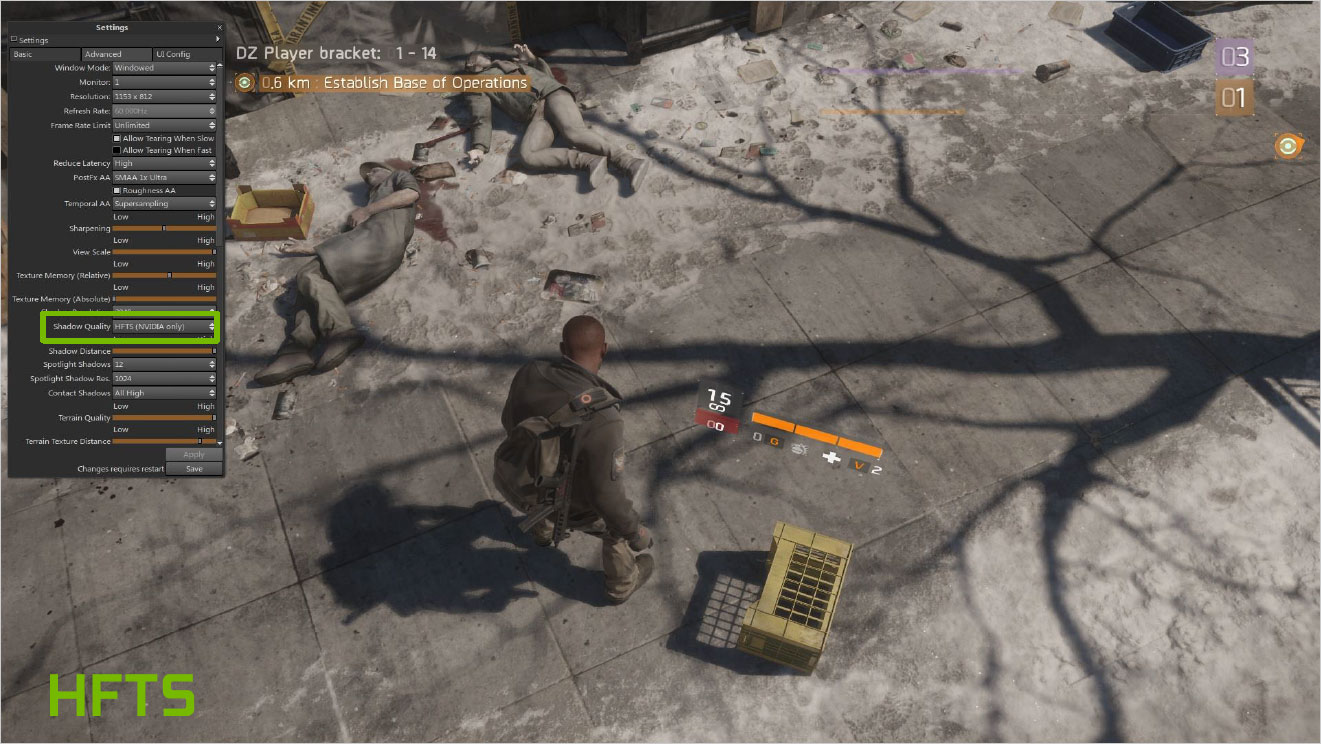Nvidia launches several new GameWorks libraries
High Fidelity Shadows (aka HFTS)
HFTS works to improve shadows, only this time it's focused on improving shadow mapping rather than AO. HFTS ends up being an evolution of the existing PCSS (Percentage Closer Soft Shadows), as we discussed in The Division Optimization Guide. Frustrum traced shadows do an excellent job at creating hard shadows, but hard shadows aren't very realistic (unless you're in a vacuum). The solution is to combine the hard frustrum traced shadows with PCSS, which will soften edges as appropriate.


While many of us are quite happy with the shadow quality many games offer—I still remember when Doom 3 first introduced real-time shadow mapping and blew me away—the realism isn't quite there. What we noticed in The Division is that there's not much difference between the Low and High shadow quality settings, while PCSS vs. High gets us about 95% of the way there. Much like Low vs. High, the difference between HFTS and PCSS is far more difficult to detect, though our testing revealed a pretty substantial drop in performance. Considering PCSS works on non-Nvidia hardware (now), the incremental gains of HFTS may not be worth the performance hit until we have substantially faster GPUs.
- Volumetric Lighting
- Voxel Ambient Occlusion (VXAO)
- High Fidelity Shadows
- Nvidia Flow and Rigid Body Physics, and VR Works
The biggest gaming news, reviews and hardware deals
Keep up to date with the most important stories and the best deals, as picked by the PC Gamer team.
Jarred's love of computers dates back to the dark ages when his dad brought home a DOS 2.3 PC and he left his C-64 behind. He eventually built his first custom PC in 1990 with a 286 12MHz, only to discover it was already woefully outdated when Wing Commander was released a few months later. He holds a BS in Computer Science from Brigham Young University and has been working as a tech journalist since 2004, writing for AnandTech, Maximum PC, and PC Gamer. From the first S3 Virge '3D decelerators' to today's GPUs, Jarred keeps up with all the latest graphics trends and is the one to ask about game performance.


